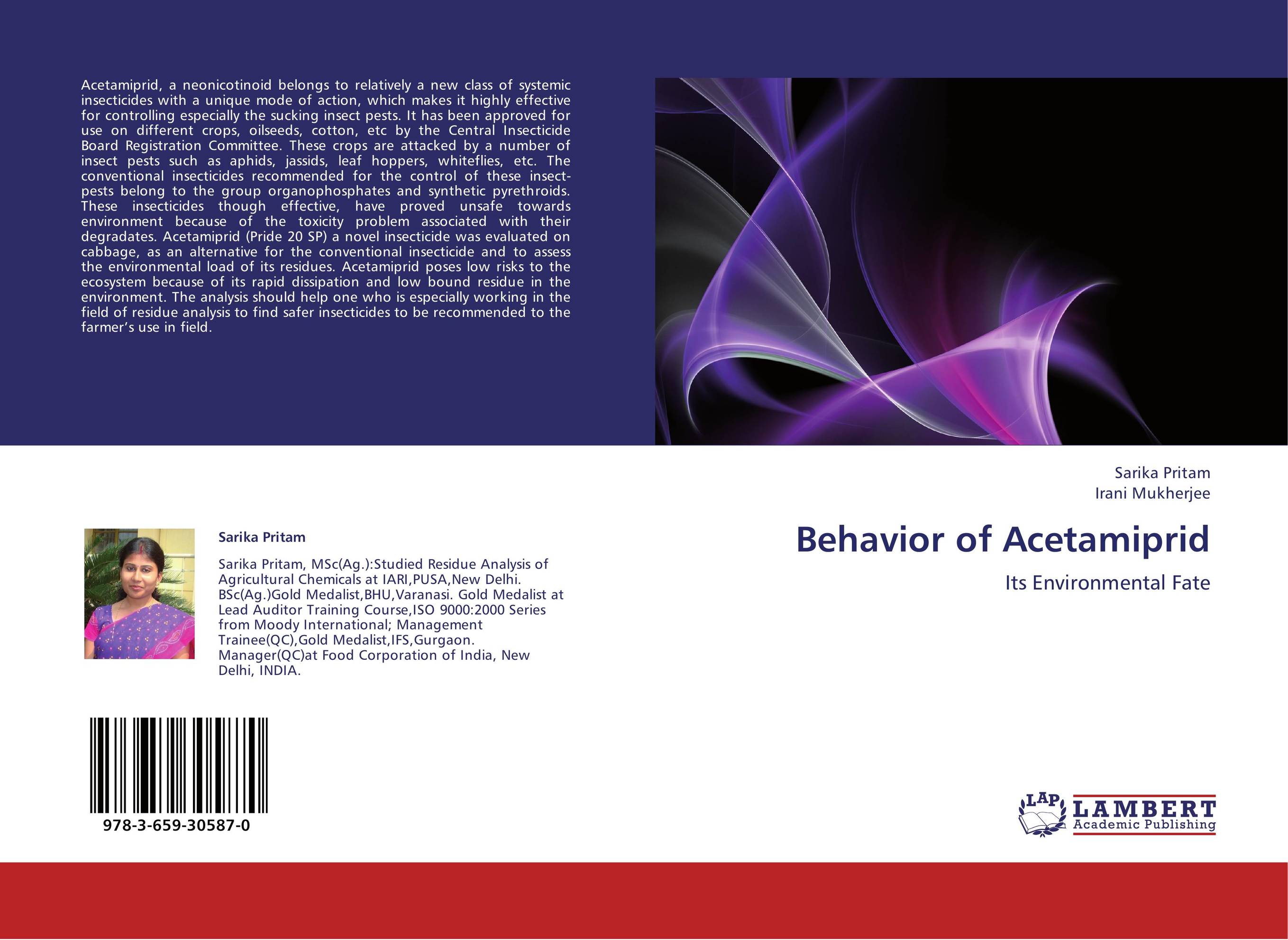| Поиск по каталогу |
|
(строгое соответствие)
|
- Профессиональная
- Научно-популярная
- Художественная
- Публицистика
- Детская
- Искусство
- Хобби, семья, дом
- Спорт
- Путеводители
- Блокноты, тетради, открытки
Behavior of Acetamiprid. Its Environmental Fate

В наличии
| Местонахождение: Алматы | Состояние экземпляра: новый |

Бумажная
версия
версия
Автор: Sarika Pritam and Irani Mukherjee
ISBN: 9783659305870
Год издания: 2013
Формат книги: 60×90/16 (145×215 мм)
Количество страниц: 88
Издательство: LAP LAMBERT Academic Publishing
Цена: 30784 тг
Положить в корзину
| Способы доставки в город Алматы * комплектация (срок до отгрузки) не более 2 рабочих дней |
| Самовывоз из города Алматы (пункты самовывоза партнёра CDEK) |
| Курьерская доставка CDEK из города Москва |
| Доставка Почтой России из города Москва |
Аннотация: Acetamiprid, a neonicotinoid belongs to relatively a new class of systemic insecticides with a unique mode of action, which makes it highly effective for controlling especially the sucking insect pests. It has been approved for use on different crops, oilseeds, cotton, etc by the Central Insecticide Board Registration Committee. These crops are attacked by a number of insect pests such as aphids, jassids, leaf hoppers, whiteflies, etc. The conventional insecticides recommended for the control of these insect-pests belong to the group organophosphates and synthetic pyrethroids. These insecticides though effective, have proved unsafe towards environment because of the toxicity problem associated with their degradates. Acetamiprid (Pride 20 SP) a novel insecticide was evaluated on cabbage, as an alternative for the conventional insecticide and to assess the environmental load of its residues. Acetamiprid poses low risks to the ecosystem because of its rapid dissipation and low bound residue in the environment. The analysis should help one who is especially working in the field of residue analysis to find safer insecticides to be recommended to the farmer’s use in field.
Ключевые слова: Water, Soil, pH, Vegetables, Neonicotinoid, Microwave assisted extraction, Acetamiprid, Persistence, Dissipation, Environmental fate



